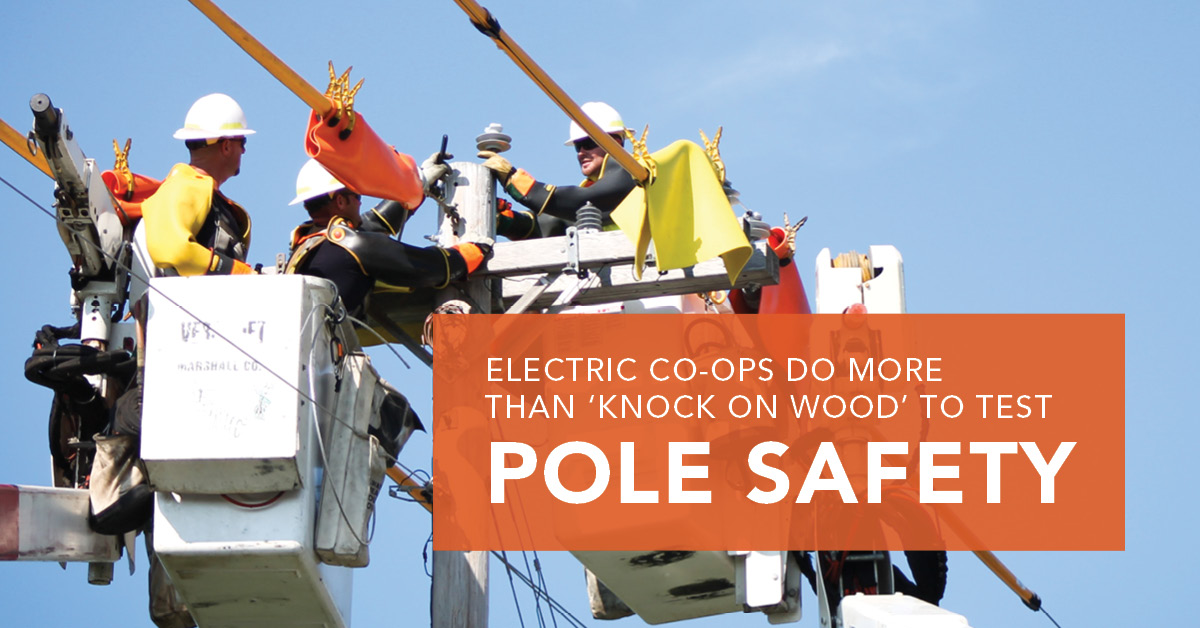Whether you’ve recently welcomed your first baby, or already have a full house, it’s vital to keep your home electrically safe for the little ones. Electrical safety should be at the top of the list when preparing a safe space for babies and children to thrive.

“September is Baby Safety Month, and we want to encourage families to make smart electrical safety decisions when baby-proofing their homes,” says John Gasstrom, CEO of Indiana Electric Cooperatives. “Tamper-resistant receptacles cost as little as 50 cents more than a standard outlet and can save a child’s life.”
What are tamper resistant receptacles (TRRs)?These outlets are now required in all new homes and homes renovated after 2008. The shutter system allows only plugs to be inserted because both springs must be compressed at the same time. While they might be a little more expensive, you can’t put a price on a child’s life.
But whydo we need TRRs in our homes?The top two things we lose just happen to be two of the top objects inserted into outlets — hairpins and keys. While we can be more conscious of what’s inserted in those outlets, we could also cut out the middleman and update to TRRs.
Are there other ways to protect your children from electrical safety?Of course! Keep all electrical cords out of reach or secured to the floor. There’s no telling what he or she could be pulling down on when tugging on a cord. Those clocks, irons or lamps could land right on their heads. Keep appliances like toasters and blow dryers unplugged and out of reach to avoid electric shock.
If outlets are occupied, an easy way to prevent children from pulling on these cords is by moving furniture in front of the covers. If outlets are unoccupied, and you don’t have TRRs, it’s vital to find tight-fitting electrical outlet covers. Test them with your children to be sure they cannot pull them out. Then you can live with peace of mind their chances of electrical shock will be decreased immensely.
Being electrically safe isn’t difficult but it does take time to keep you and your family safe! For more information about TRRs and how to keep your home properly baby-proofed, reach out to your electric co-op.
Is your home fully baby-proofed?
- Check the crib. Make sure it meets today’s safety standards.
- Install window guards but remember, they do not substitute parental supervision.
- Attach safety latches and locks for toilets, cabinets or drawers.
- Cut blind cordsor use safety tassels and inner cord stops to ensure children don’t get entangled.
- Put up safety gates in front of any stairs in the house.
- Install corner and edge bumpers. These will prevent injuries from falls.
- Use doorstops and door holders. Keep small fingers from getting crushed or pinched.
- Make a kid-free zone. Keep kids away from grilling areas, or any structure that might contain tools, lawn mowers, etc.
- Childproof the pool. Install a lockable fence around the perimeter that can quickly be opened by adults in case of emergency.
Day care electrical safety: Your baby’s home-away-from-home
- Try a child’s-eye view. Pay attention to hazards you might not notice when standing up. By looking at the space from the child’s viewpoint, you may see accidents waiting to happen.
- Make sure your space is child safe. Store dangerous chemicals and medicines out of children’s reach. Cover electrical outlets and store dangerous or breakable objects up high. Fix, lock up or discard anything that might be a danger to children. Be sure all outdoor play areas are fenced in to keep children safe.
- Arrange your space wisely. If a space is too open, you may find children running wildly. Set up shelves and other furniture to divide the room into separate learning and play areas.
- Organize toys and supplies to make things easy for children. Place toys on low shelves. Label the shelves with pictures and words so children will know where to put them back.
- Make sure the toys match the children’s ages and abilities. Infants need toys they can shake, drop, mouth, roll and otherwise explore with their bodies. Toddlers need toys they can push, pull, grab, fill, dump or yank without causing major damage.
- Teach children how to handle toys and materials. Explain and model how to carefully handle books, toys and other materials.





